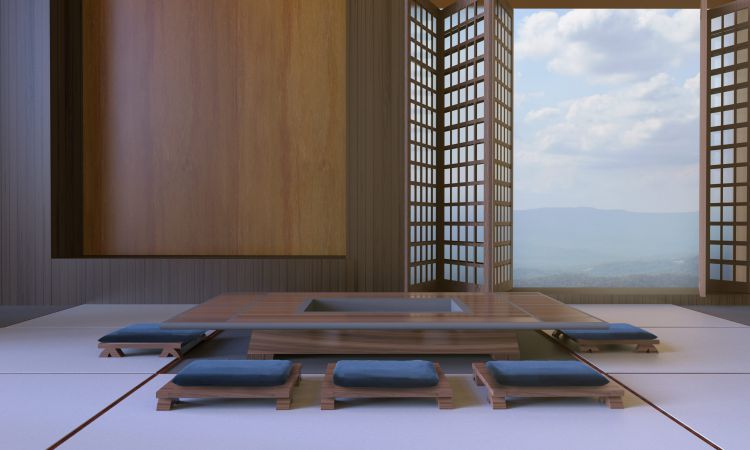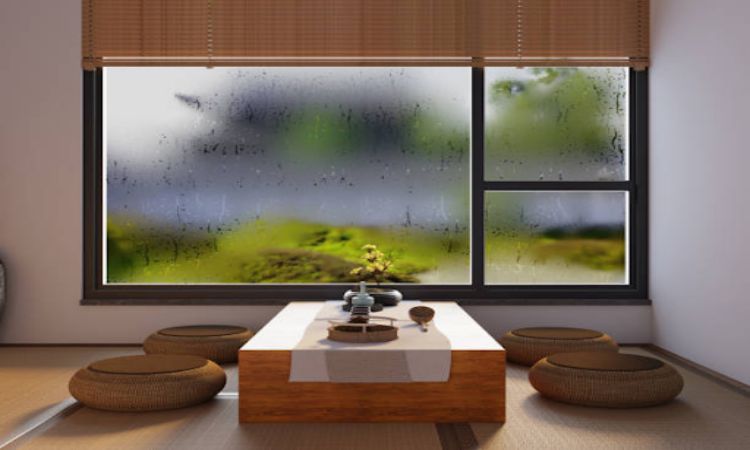 Introduction
Introduction
Traditional Japanese interior design is a unique style of design that reflects the culture, values, and beliefs of Japan. It is characterized by simplicity, nature-inspired elements, and a focus on craftsmanship. Traditional Japanese interiors often feature natural materials such as wood and stone, as well as subtle colors like white, black, grey, and beige. Furniture pieces are usually low to the ground with simple lines that evoke a feeling of serenity. Other elements such as shoji screens (sliding paper doors), tatami mats (straw floor coverings), futon mattresses (thin cotton-filled mattresses), and shoji lamps(paper lanterns) are also common in traditional Japanese designs. The overall effect of these features helps to create an atmosphere of tranquility in any home or space.
History of Japanese Interior Design
The history of Japanese interior design is a fascinating one, and it’s important to understand the cultural influences that have shaped this unique style. Over the centuries, various design elements have been borrowed from different traditions and blended together to create something truly unique. The earliest influence on Japanese interior design came from Buddhism, which arrived in Japan via China as early as 552 AD. Buddhist temples are known for their highly decorated interiors, featuring elaborately painted walls, statues, and other decorations that were designed to promote meditation and spiritual contemplation. These early designs provided an important foundation for later developments in Japanese interior design.
In addition to Buddhism, Japan was also heavily influenced by Chinese aesthetics during its formative years. This included a preference for wood furniture with simple lines and natural finishes that were designed with comfort in mind rather than ornate decoration like many Western pieces of furniture at the time. By combining elements from both cultures, a new type of minimalist yet elegant style was born that is still seen today in modern homes across Japan. If you are looking for a traditional, timeless interior design for your home, click the link: https://zenitharc.com.sg/interior-design-styles/japanese/.
 Key Elements of Japanese Interior Design
Key Elements of Japanese Interior Design
When it comes to interior design, Japan is a country that has long been known for its luxurious, stylish, and creative designs. From traditional tatami mats to modern minimalist furniture, Japanese interior design has something for everyone. Here are some of the key elements of Japanese interior design that you should consider when creating your own unique space.
1. Minimalism:
One of the main principles behind Japanese interior design is minimalism – using fewer elements to create a more sophisticated look. This means that you should focus on keeping your space free from clutter and unnecessary items, instead opting for sleek lines and simple shapes.
2. Natural Materials:
Natural materials are also important in Japanese interior design as they provide warmth and texture to any room or space. Common materials used include wood, bamboo, paper screens (shoji), and stones like granite or marble for countertops or flooring material as well as tatami mats which have a distinct texture all their own.
3. Nature-Inspired Colors:
Using nature-inspired colors like greens, blues, and earthy hues helps bring the outdoors inside – creating a calming atmosphere in any room or space with natural light enhancing its effect even further!
Practices of Japanese Interior Design
Japanese interior design is a unique, modern style of interior decorating that seeks to create a tranquil and serene atmosphere. It combines traditional Japanese elements with contemporary designs, creating an elegant and peaceful atmosphere in any room. From the use of natural materials to the incorporation of minimalism, Japanese interior design has become increasingly popular in recent years for both residential and commercial spaces.
The main goal of Japanese interior design is to create a balance between nature and man-made creations. Natural elements such as wood, stone, plants, paper screens, and tatami mats are often utilized to achieve this harmony. They provide texture and depth while helping create a tranquil environment in any space. The colors used throughout the space should also be chosen carefully; muted tones such as green, blue, or gray are typically favored for their calming effects on people’s mindsets.
Minimalism is another key element of Japanese interior design. By reducing clutter and focusing on simple shapes, colors, and textures you can help emphasize the Zen-like atmosphere you’re aiming for in any space. Furniture should also be kept minimalistic; pieces that have clean lines are ideal when designing with this style because they won’t overpower your room or take away from its overall calmness.
Types of Traditional Japanese Interiors
Traditional Japanese interiors are marked by their elegant simplicity and use of natural materials. For centuries, the Japanese have used wood and paper to create a warm, inviting atmosphere for their homes. These elements are combined with other traditional features such as tatami mats, shoji screens, and sliding doors to create a unique style of interior design that is both beautiful and functional. In this article, we’ll explore the different types of traditional Japanese interiors so you can get an idea of how to incorporate them into your home.
Conclusion
Traditional Japanese interior design is a timeless style that has been embraced for centuries. It is characterized by its emphasis on minimalism and natural materials, creating a peaceful and calming atmosphere. While it may not be the most modern expression of design, its simplicity and beauty make it an enduring favorite among many homeowners.




